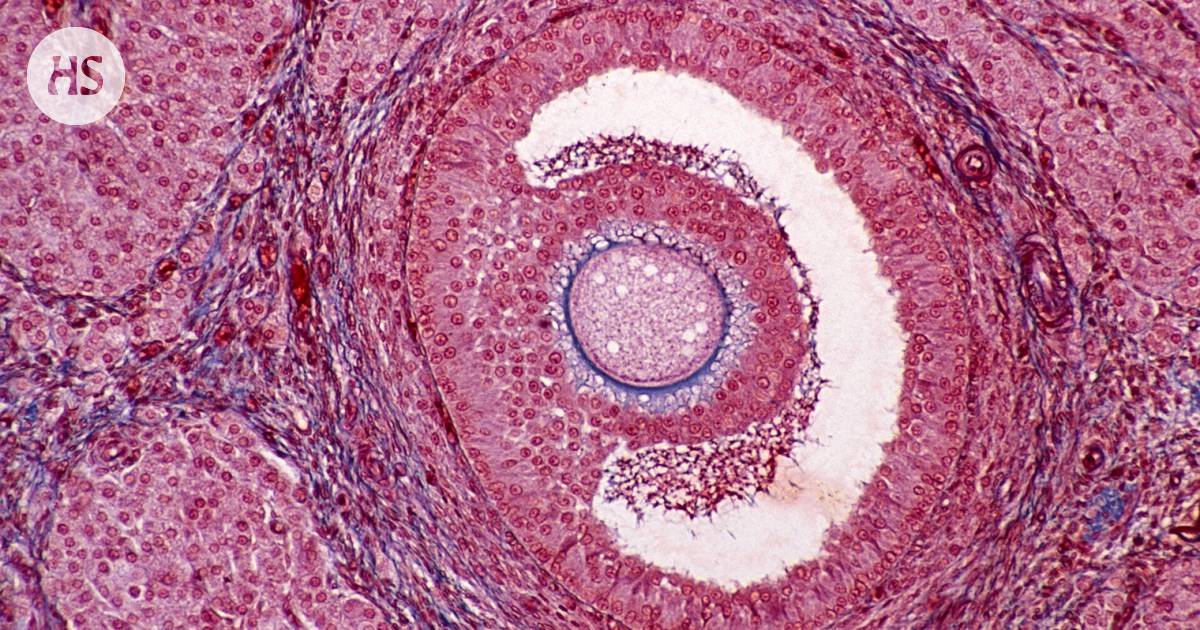Paleoanthropology|When women’s egg-producing follicles became more efficient, energy was released for brain development.
The summary is made by artificial intelligence and checked by a human.
Humans have a relatively large brain compared to their body size.
Now the researcher presents a new theory about the growth of the brain.
More efficient follicles released energy for brain development.
Not all researchers are convinced by the new theory.
Man stands out in the animal kingdom with its relatively large brain. Thanks to them, we have invented the bicycle and the space rocket, among other things.
The rule is that the bigger the animal, the bigger the brain. However, humans have six times the size of their brains as one would expect based on their body size.
Fossils tell us that in the ancient human lineage, brain size tripled in four million years as we progressed from Australopithecus that is, from the South Pole to modern man.
Why humans have developed such an information processing organ, which is also energy hungry? After all, the brain consumes a fifth of the body’s energy resources.
Now a researcher in evolutionary biology at the Scottish University of St Andrews Mauricio Gonzalez-Forero present Nature Human Behavior -in the scientific journal a new theory about what caused the human brain to grow so fast.
According to him, the cause of the enlargement was that the follicles that produce eggs in women became more efficient. This reversal freed up energy for brain development.
Egg follicles are small sacs in the ovaries from which eggs are released for fertilization.
When the formation of egg follicles moved later in evolution, the brain got its chance.
In the change, exactly the amount of energy that was required for the development of the human brain to its current size was released. In the brain, the possibility of growth was ready, only the necessary energy input was missing.
González-Forero arrived at his theory by modeling how evolution could have produced our current brain.
In his model, he took into account many factors that affect the development of the human body. He noticed that the change in the follicles best matched the fossil record of the increase in brain size.
More common ones theories link the development of brain size to the fact that man’s complex social environment has created pressure to become smarter and led to brain enlargement.
According to González-Forero’s model, the size of the brain is a kind of by-product.
“I noticed that there is no need for selection based on the need for cognitive abilities, as has been suggested. It’s quite surprising,” González-Forero tells Pnas science magazine in the interview.
According to him, traits that promote adaptation to the environment do not always have to evolve in the first place because they help to adapt to the environment.
Follicles the change was the result of natural selection because it had a direct reproductive benefit. Instead, according to his model, direct natural selection is not needed to explain the change in brain size.
When the growth of the brain is freed, its evolution can also be influenced by, for example, the ecological challenges people face in their environment and the accumulating culture.
All are not convinced by the new theory. For example, the evolutionary psychologist interviewed by Pnas Robin Dunbar supports the idea that sociality has fueled the development of the brain, and he does not believe that modeling will get you far.
“The problem is that the modelers have never been close to a real animal, let alone a real environment.”
Published in Tiede magazine 9/2024

Forum | Internal Medicine Board Review Questions | Knowmedge
I recently explored wheelchair transportation subscription p | A Dental Assistant World | Hands On DAT
Bridging Healthcare Gaps: The Vital Role of Non-Emergency Medical Transportation (NEMT) | The Healthcare Guys
I recently completed the PASS training program from website | Harvard Medical School | Medicine in Motion
Call the Care, LLC | Hollywood, FL 33020 | DexKnows.com
Call the Care, LLC 2138 Van Buren Street, Hollywood, FL 33020 – superpages.com
Call the Care, LLC – Hollywood, FL 33020
Auf Casino official website | AufCasino
Auf Casino official website | AufCasino
Auf Casino official website | AufCasino
Auf Casino official website | AufCasino
Auf Casino official website | AufCasino
Auf Casino official website | AufCasino
Auf Casino official website | AufCasino
Auf Casino official website | AufCasino
Auf Casino official website | AufCasino
Auf Casino official website | AufCasino
Auf Casino official website | AufCasino
Auf Casino official website | AufCasino
Auf Casino official website | AufCasino
Auf Casino official website | AufCasino
Auf Casino official website | AufCasino
Auf Casino official website | AufCasino
Auf Casino official website | AufCasino
Auf Casino official website | AufCasino
Auf Casino official website | AufCasino
Auf Casino official website | AufCasino
Auf Casino official website | AufCasino
Auf Casino official website | AufCasino
Auf Casino official website | AufCasino